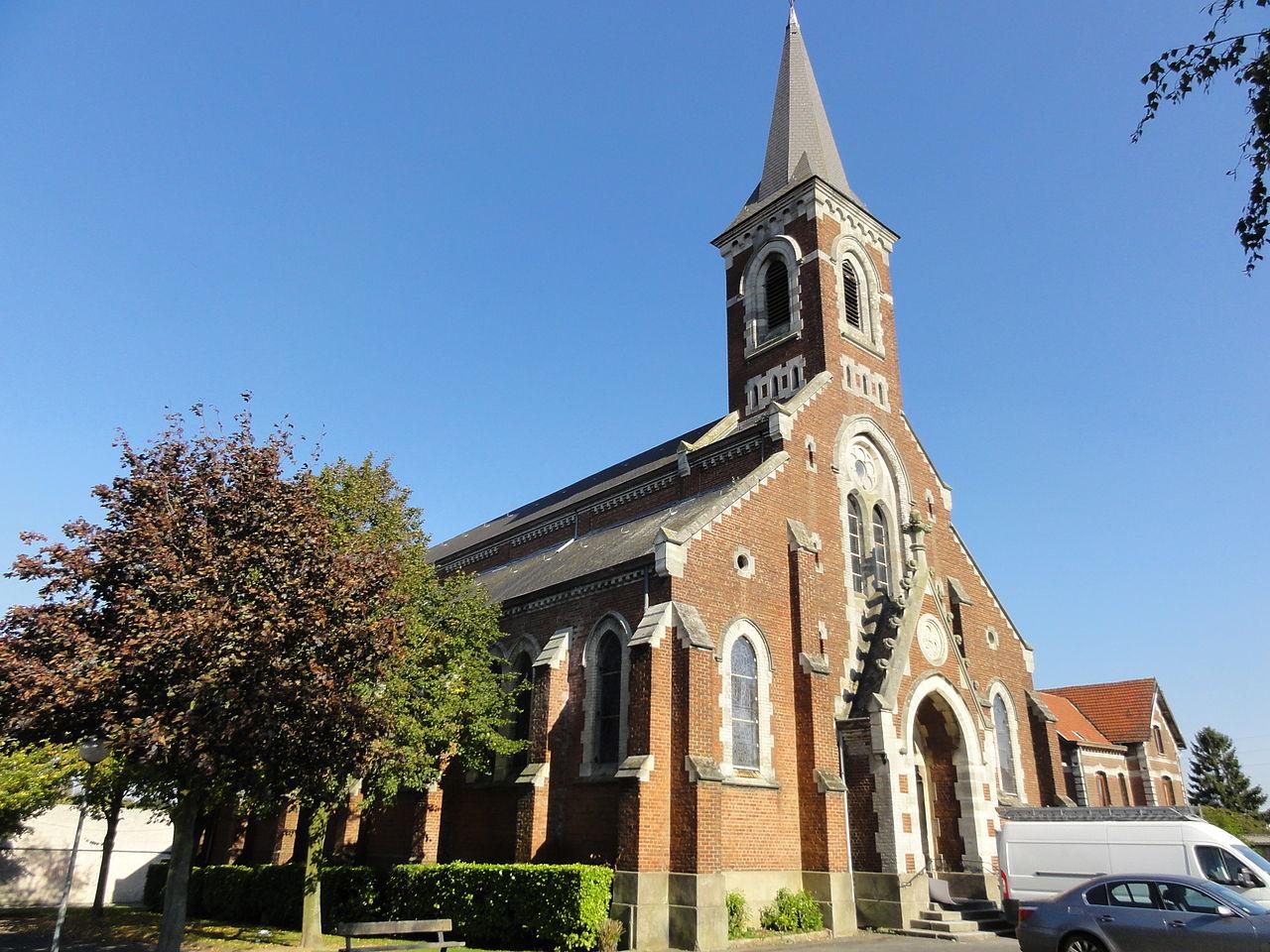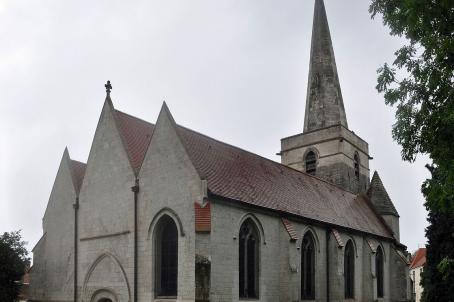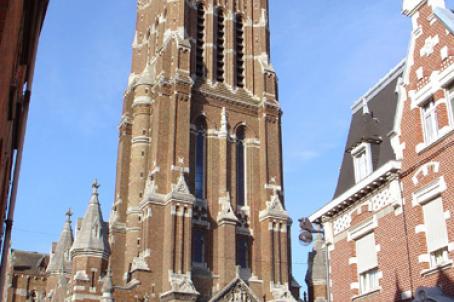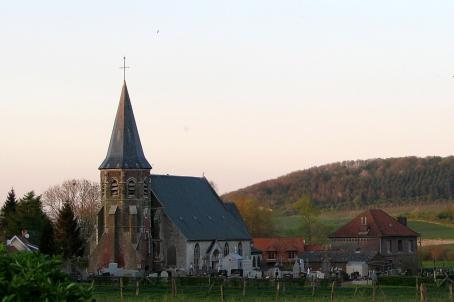St. Joseph's Church
St. Joseph's Church was built from 1913 to 1922 and was intended for the miners of pits no. 6, no. 6 bis and no. 6 ter, known as the Hallicourt pits. The works were interrupted by the beginning of the 1914-1918 war and only resumed after the war according to the plans of the architect Paul Degez. The neo-gothic brick church with corbelled stone corbels in the regional style has a bell tower above the façade, topped by a high slate spire and a pointed porch. It has a Latin cross plan.






